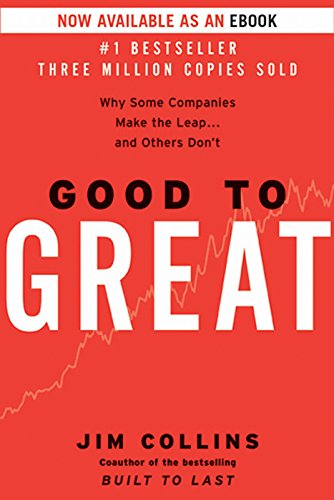

This article is an excerpt from the Shortform summary of "Good to Great" by Jim Collins. Shortform has the world's best summaries of books you should be reading.
Like this article? Sign up for a free trial here .
What is a BHAG, or Big Hairy Audacious Goal? Why do you need one if you want your business to be successful?
A BHAG (Big Hairy Audacious Goal) is a huge, seemingly impossible objective that can inspire outsiders and stakeholders alike. The concept of the BHAG (pronounced bee-hag) is explored in Jim Collins’s Built to Last.
We’ll cover what a good BHAG or Big Hairy Audacious Goal looks like and how it ties in with your hedgehog concept, another necessity for a successful business.
Big Hairy Audacious Goals (BHAGs)
But there are good Big Hairy Audacious Goals and bad Big Hairy Audacious Goals:
- A good BHAG is one determined by the deep understanding derived from hedgehog thinking—the application of the three circles and the creation of a Hedgehog Concept.
- BHAG Example: Boeing, for example, began as a military contractor exclusively. When a level 5 CEO took over the company in 1952, he realized that the company’s knowledge of jet propulsion and manufacturing large airplanes could apply to the design and production of large-scale commercial aircraft. This was a good Big Hairy Audacious Goal.
- The BHAG—to become the leading commercial aircraft maker in the world—was certainly bold, but it checks out when analyzed using the three circles: (1) The company’s technology and knowhow meant it could be the best commercial aircraft manufacturer in the world; (2) commercial aircraft satisfied its economic variable (profit per aircraft model); and (3) the company’s managers were passionate about the move.
- BHAG Example: Boeing, for example, began as a military contractor exclusively. When a level 5 CEO took over the company in 1952, he realized that the company’s knowledge of jet propulsion and manufacturing large airplanes could apply to the design and production of large-scale commercial aircraft. This was a good Big Hairy Audacious Goal.
- A bad BHAG is one determined by hubris, without the steady and disciplined development of a Hedgehog Concept.
The Big Hairy Audacious Goal and the Hedgehog
People can be divided into foxes and hedgehogs: Foxes know many things and engage with a complex world on its own terms; hedgehogs know one big thing and subsume the world’s complexity to a single, simple, unifying idea.
Collins et al. determined that “hedgehog concepts” emerge from a Venn diagram consisting of three key questions: What can I do better than anyone else in the world? What is my financial engine? And: What am I profoundly passionate about? Knowing you hedgehog concept can help you create a good Big Hairy Audacious Goal.
Circle #1: What can I do better than anyone else in the world?
Rather than focus on “core competences,” good-to-great companies homed in on an area of their business they led (or could lead) the world in. This is key to creating a good Big Hairy Audacious Goal.
For example, by the 1960s, Abbott Labs hadn’t invested enough in R&D to compete with major pharma companies like Merck. So, even though Abbott had focused on pharmaceuticals for its entire existence, CEO George Cain decided to move the company into the areas of hospital nutritional products and diagnostic devices, areas with which the company had flirted and in which opportunity was significant. Abbott eventually became leading company in both these areas.
The takeaway is this: If you can’t be the best in the world in a particular area, even if it’s your core business, then it can’t be part of your Hedgehog Concept. It’s equally useful to define what you cannot be the best in the world at, and to avoid that sector.
Circle #2: What’s my economic engine?
It might be tempting to assume that the good-to-great companies happened to be operating in booming industries at the transition point—but, in fact, only one of the good-to-great companies was in a high-return industry. (Collins et al. ranked each of the good-to-great companies’ industries by averaging returns for the top companies within those industries.) This should also be a factor in a company’s Big Hairy Audacious Goal (BHAG).
The reason the good-to-great companies were able to excel regardless of industry was their sharp insight into the fundamental economics of what aspect of their business would drive profits. They formulated a single “economic denominator,” defined as a ratio such as “profit per X,” and aligned their strategy around that ratio. The challenge was to define the correct X to produce the correct strategy.
For example, a common-sense economic denominator for a pharmacy—or any retail company—is profit per store. This thinking would lead to a strategy of cutting stores and lowering costs per store, at the expense of customer experience.
Walgreens, however, knowing that it wanted to maximize convenience, also knew that profit per store would likely diminish (because more convenience = more stores in a smaller area = less profit per store). So they transformed their thinking: They optimized their stores for profit per customer visit, thereby aligning their economic denominator with what they could do better than anyone else in the world—build convenient drugstores.
Circle #3: What is my profoundest passion?
Although good-to-great companies certainly wanted to maximize profits, they weren’t simply looking for golden opportunities. Rather, they pursued courses of action that inspired their people. They only chose opportunities that their team could get passionate about. You need passion to achieve your Big Hairy Audacious Goal.
For example, while its competitors ran a race to the bottom by manufacturing ever-cheaper disposable razors, Gillette went in the opposite direction, designing and producing sophisticated shaving systems that its technicians and executives could get excited about.
—
In the intersection of the three circles lies your Hedgehog Concept. This is a deep understanding of where you can play, win, and make a profit.
———End of Preview———

Like what you just read? Read the rest of the world's best summary of "Good to Great" at Shortform . Learn the book's critical concepts in 20 minutes or less .
Here's what you'll find in our full Good to Great summary :
- The 3 key attributes of Great companies
- Why it's better to focus on your one core strength than get spread thin
- How to build a virtuous cycle, or flywheel effect, in your business






